10. JAWS (1993 – 2012) // Diagon Alley (2014 – Today)

You just can’t get more “Universal Studios Florida” than the Lost Legend: JAWS. Though technically it was the second attempt at the ride (the first, which opened with the park in 1990, didn’t work), the ultra-classic attraction is still envisioned as one of the park’s anchor experiences. Basically a demented take on the Jungle Cruise, JAWS stranded guests on the open water of Amity just as a Great White with a penchant for jump scares sets its sights on the New England town.
After the success of the Wizarding World of Harry Potter, many expected the remainder of Islands of Adventure’s Lost Continent to join Merlinwood in falling to the boy wizard. But instead, in 2012 Jaws closed at Universal Studios Florida. Operationally, it makes sense since it means guests need to at least upgrade to a Park-to-Park or Multi-Day ticket to see all of the Wizarding World.
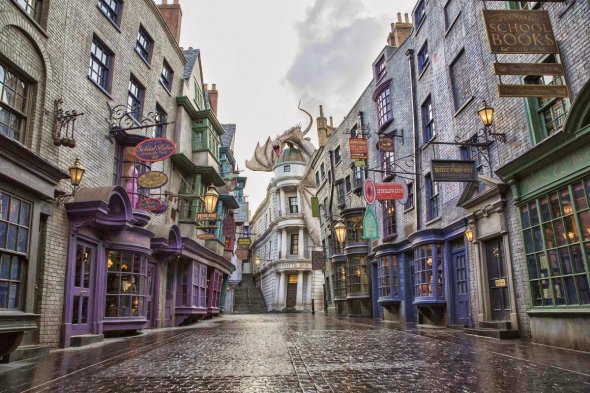
Narratively, it’s a good fit, too, since London and its Diagon Alley street fit better among the other cityscapes in the Studio park (like New York, Hollywood, and San Francisco) than they would at the more mystical, literary, fantasy Islands of Adventure (where the storybook-style Hogsmeade village is a perfect fit).
THEN & NOW: What’s probably most surprising is just how much is able to fit into the former Amity Village and the JAWS ride, including all of the park’s new London waterfront (with Knight Bus meet-and-greet), Kings Cross Station and the Hogwarts Express inter-park ride, the entire Diagon Alley land (complete with restaurants, shops, a Knockturn Alley walkthrough, and a stage), and the Escape from Gringotts headliner.
Even where the most ardent fans of JAWS and the most nonplussed Potter-avoiders overlap, they’d have to admit that the former ride’s loss was “worth it” in many regards. Aside from giving Universal Orlando two Wizarding Worlds that practically print money via “in-universe” souvenirs and snacks, and being a net +1 to the park’s ride count, many industry writers cite Diagon Alley as the unrivaled best of the “Living Land” era.
11. World of Motion (1982 – 1996) // TEST TRACK (1999 – Today)

Though it’s easy to group the Lost Legend: World of Motion into discussions about the lengthy, educational, sometimes-self-serious dark rides that once permeated EPCOT’s Future World, the park’s trip through the past, present, and future of transportation was one-of-a-kind. That’s because it’s the only Disney Parks attraction to have been designed with the help of animator Ward Kimball, whose humorous scenes and delightfully-staged set-ups gave the ride a cartoonist’s sense of fun without the weight Future World rides can sometimes carry.
World of Motion carried guests through the many happenstance inventions that have propelled us forward farther and faster, from man-power to animal-power; the wheel to steam; hot air balloons to bicycles, and the to the “world’s first traffic jam,” all infused with whit and irony and laugh-out-loud scenes you’d expect from a Tex Avery short. Of course, in what serves as a recurring plot point in our Lost Legends collection, a desperate effort to modernize EPCOT and redefine it as Disney World’s “Discovery Park” doomed it.
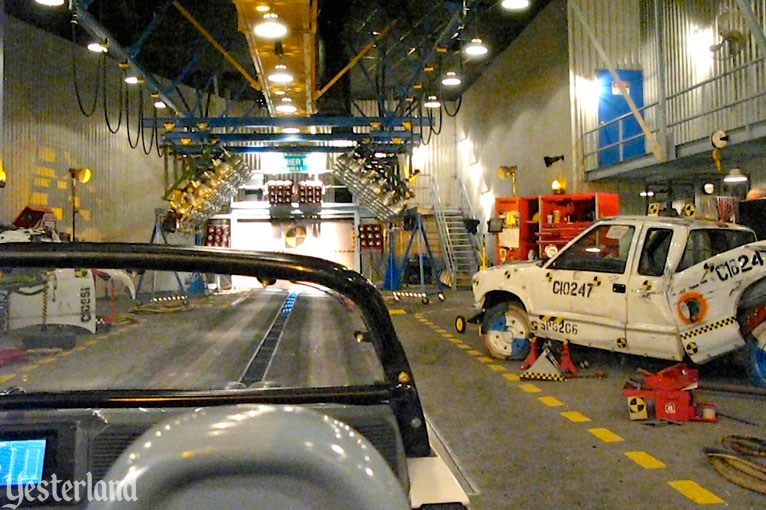
In 1996, World of Motion closed to make way for something very, very different. Though still sponsored by General Motors, 1999’s TEST TRACK reused the second story of the circular showbuilding by clearing it out entirely. The cavernous interior would now serve as a vehicle proving grounds, with riders serving as “test dummies” along for the ride as a GM car is put through its paces.
TEST TRACK didn’t try to tell you about the history of transportation; it was a “high brawn, low brains” thrill ride with an industrial aesthetic to match.
In a flurry of traffic cones, reflectors, spotlights, and yield signs, guests in low-to-the-ground, six-passenger test vehicles would accelerate along straightaways before slamming on anti-lock brakes; progress through extreme temperature tests; rumble over terrain blocks, rise and fall along hairpin turns, and more. The vehicle test would conclude by insinuating that guests would next participate in the Barrier Test, slamming into a solid wall at full speed as test dummies often do on car safety commercials. At the last second, the wall would part, leading to a high-speed ride around EPCOT’s backstage parking, reaching speeds of 65 miles per hour – the fastest Disney ride ever.
The ride was a hit… but it nonetheless earned its own in-depth Lost Legends: TEST TRACK feature because in most quantifiable ways, it’s gone. In April 2012, Test Track was shuttered for a major facelift. Exorcising the traffic signs, orange cones, and warning stripe aesthetic that had marked the ride, TEST TRACK moved at least a little more in the “EPCOT” direction with a complete relaunch in December 2012.
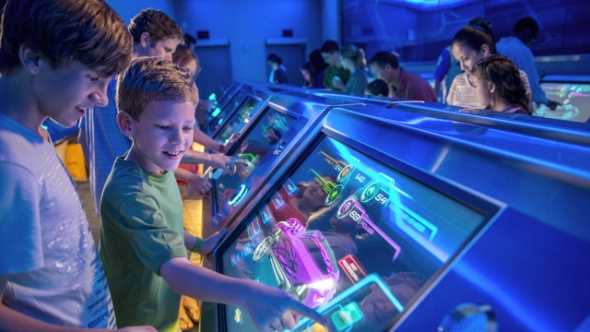
The “new” version of the ride (officially, “Test Track Presented by Chevrolet” – a GM brand – and unofficially “Test Track 2.0”) is at least a little brainier, swapping the ride’s aesthetic from “factory assembly line” to “sleek prototype showroom,” and its focus from vehicle safety testing to the engineering design process. In the queue, guests actually design their own custom concept vehicle, balancing four factors that determine a car’s performance: Capability, Efficiency, Responsiveness, and Power.
Those custom designs follow guests via MagicBand, linking to their ride vehicle. Rather than a stark, barren, spotlit factory interior, the ride now takes place in the “SimTrack” – a glowing, digital landscape drawn straight from TRON. The ride’s tests are now grouped by those design criteria (Capability, Efficiency, Responsiveness, and Power) with matching digital road colors and read-outs of guests’ custom vehicle performance after each.
In other words, a whole lot has lived in that second story of the Transportation pavilion at EPCOT, and which of the pavilion’s three forms is the best is for you to decide.
12. Snow White’s Scary Adventures (1983 – 2020) // Enchanted Wish (2021 – Today)
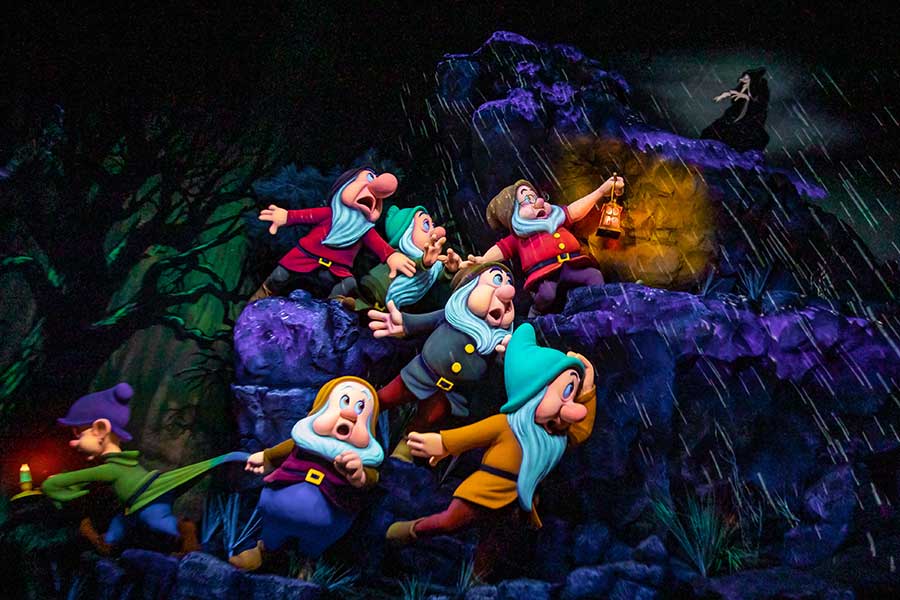
Disneyland’s Fantasyland is a Parks historian’s paradise, with six – six! – classic dark rides, including all three of the park’s Opening Day Originals still intact (although modified first by complete rebuilds as part of 1983’s New Fantasyland, and then by piecemeal tweaks and updates in the 40 years since). To that end, the version of the Lost Legend: Snow White’s Scary Adventures most fans know existed for nearly 40 years of Disneyland’s history! Until…
Snow White’s Scary Adventures closed in January 2020 for a refurbishment that would not only update the classic with a few modern Imagineering tricks (projection, lighting, sound, and animation), but would also (somewhat controversially) lessen the ride’s “scare” factor. The redesigned Snow White ride would still feature the Witch who had rattled generations of visitors, but balance her presence with more of Snow White herself and a long-absent happy ending. The park’s 14-month closure due to the COVID-19 pandemic meant that the new Snow White’s Enchanted Wish didn’t open until April 30, 2021.
THEN & NOW: Despite fans’ fears, Snow White’s Enchanted Wish doesn’t look too different from Snow White’s Scary Adventures at all. Sure, there are warmer tones on the facade, the “dungeon” in the queue has instead become Snow’s bed chamber, and technological flourishes abound, but otherwise, everything fans loved about the original remains. The ride’s first third is largely unchanged, but for added figures, animation, and subtle projection; its second third (the Witchy one) is pretty much untouched but for show “plusses”; and its new final third manages to include a genuinely stunning, emotional, and arresting new happy ending. So, all’s well that ends well.
13. Backstage Studio Tour (1989 – 1996) // Toy Story Land & Star Wars: Galaxy’s Edge (2019 – Today)
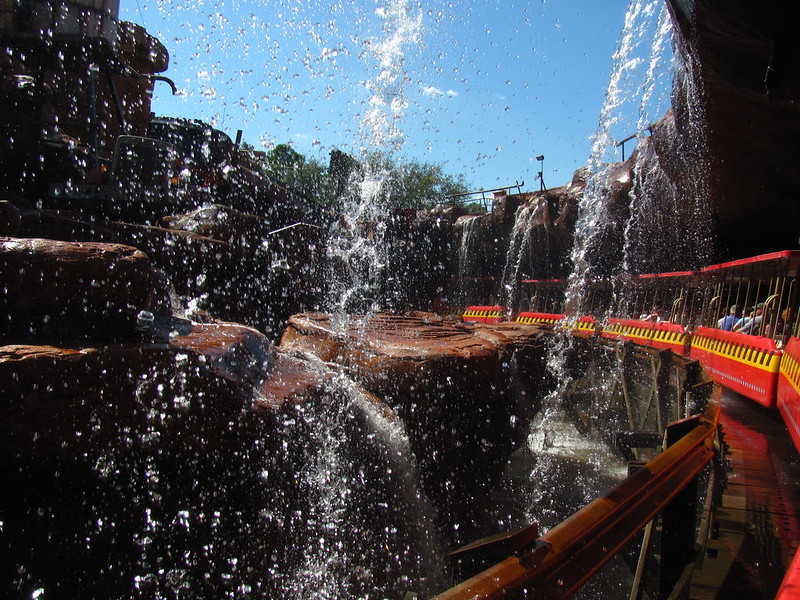
It’s easy to forget that when Disney World’s third gate premiered in 1989, being a theme park was only half of its job. The Disney-MGM Studios really was envisioned as a real, working film and television campus with all the support facilities to make movie magic happen. In fact, guests on foot only had access to Hollywood Blvd. and Echo Lake.
To see the rest of the studio, you needed to pass under the studio arch across from the Chinese Theater, where the romance of “the Hollywood that never was” melted away in favor of the realities of moviemaking: soundstages, lighting rigs, and backlots. The “Studio” half of the Disney-MGM Studios could only be accessed one way: the Backstage Studio Tour, a sprawling, multi-hour attraction with tram-led and walking tour components.
THEN & NOW: As our in-depth Declassified Disaster: The Backstage Studio Tour feature explores, it became apparent pretty quickly that the Disney-MGM Studios wasn’t really going to work as a movie studio. That didn’t stop the tour, though. Even once it was split into two separate attractions (a tram tour and a walking tour) – and even as production facilities were turned over to the theme park proper one-by-one – Disney maintained that you just might stumble on a hot set on the Studio Tour until it was mercifully shuttered in 2014.
To give you a sense of just how much of the park was once accessible only via the Tour, modern day Grand Ave., Star Wars: Galaxy’s Edge, Toy Story Land, and Animation Courtyard were all once fully and completely real estate set aside exclusively for the movie studio that barely was.
14. Knott’s Bear-y Tales (1975 – 1986) // Knott’s Bear-y Tales: Return to the Fair (2021 – Today)

For a generation of Southern Californians, there was nothing quite as joyful as a trip to the County Fair on the Lost Legend: Knott’s Bear-y Tales – a one-of-a-kind dark ride designed by Disney Legend and Imagineer Rolly Crump. Guests “riding on the ole’ Knott’s Bear-y line” of red car trolleys (all to the tune of an iconic theme song) began at the boysenberry pie factory, then set off through the musical Frog Forest, a glowing Fortune Teller Camp, the treacherous Thunder Cave, and the wacky Weird Woods en route to first place in the County Fair’s pie contest.
By the mid-’80s, Knott’s homegrown, sing-along dark ride looked positively naive. After a surprisingly short lifetime of just 11 years, Bear-y Tales was closed so that its track and showbuilding could be repurposed for 1987’s cooler and more modern Kingdom of the Dinosaurs. (In many ways, it ended up being a lucky trade, equipping Knott’s with a dino-dark-ride just before prehistory hit big in the ’90s via Jurassic Park.) By 2004, that, too, had closed, leaving the second-story dark ride space empty for over a decade.
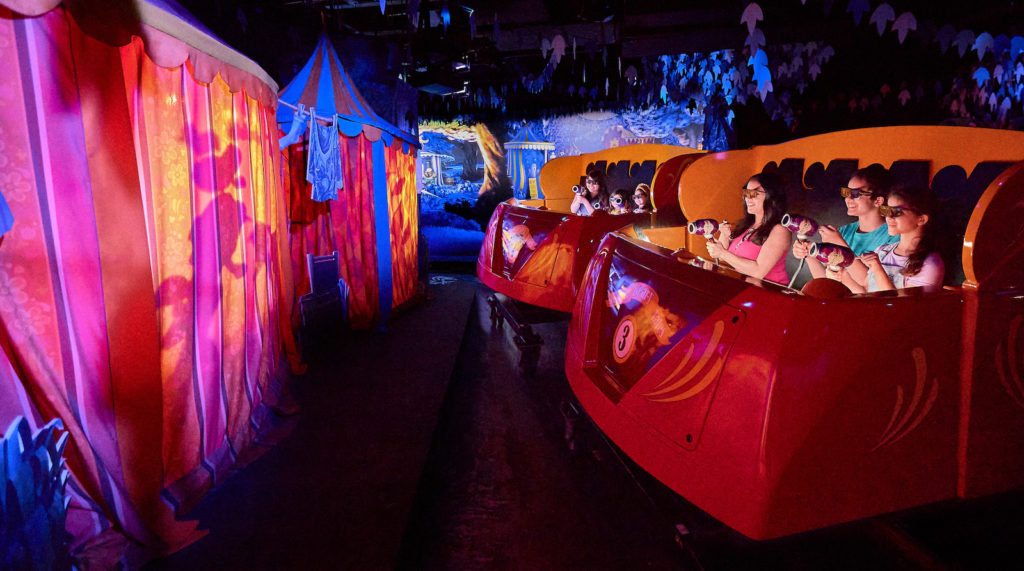
In 2015 – as part of a multi-year effort to restore Knott’s historic dark rides – the space was at last reactivated with a new dark ride called Voyage to the Iron Reef. A virtual shooting dark ride designed by the company Triotech, Voyage to the Iron Reef made use of digital screens over physical sets, and it didn’t make too many fans. But the ride did install the infrastructure needed for a fourth inhabitant of the space: 2021’s Knott’s Bear-y Tales: Return to the Fair (above).
THEN & NOW: Obviously, our Then & Now skips both Kingdom of the Dinosaurs (1987 – 2004) and Voyage to the Iron Reef (2015 – 2020), instead highlighting how Knott’s returned the Bear-y family to their home after a 35 year hibernation. Since the new “Return to the Fair” re-uses the track layout and conceit of the virtual shooting dark ride that preceded it, it physically occupies a smaller space. But it still manages to pack in the return of the Frog Forest, Fortune Teller Camp, Thunder Cave, Weird Woods, and County Fair in a wonderfully nostalgic, vividly-crafted, and altogether delightful ride that’s a smart use of a homegrown intellectual property.
15. Journey into Imagination (1983 – 1998) // Journey into Imagination With Figment
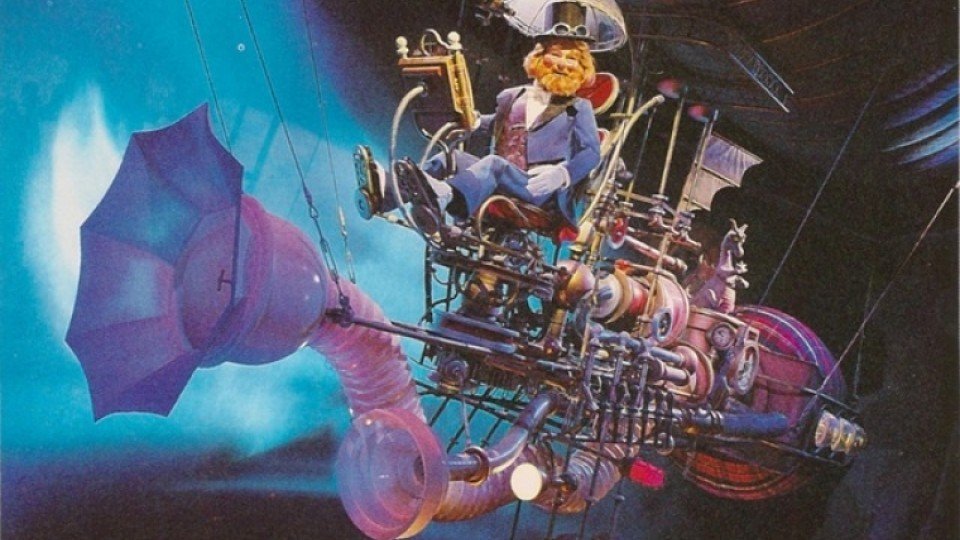
You’ve probably been waiting for this one, and here it is. The Journey into Imagination pavilion was a respite from the hard sciences of Future World; and more to the point, the “origin story” of where each of those industries was born from. Journey into Imagination was the park’s most heart-felt dark ride, whisking guests into the clouds for a whimsical, musical, and inspiring experience.
The ride’s heart – literally – was the “Flight into Imagination,” a scene in which a train of modified Omnimovers aligned with a rotating set of stages at the showbuilding’s core. There, guests would glide alongside the flying Dreamcatcher (above) – piloted by the inventive, red-bearded Dreamfinder and his dragon sidekick and creation, Figment – to learn how they turn “sparks of inspiration” into new ideas. From there, they’d set off into the worlds of Art, Literature, Performing Arts, Science, and Imagining Technology (basically, photography… thanks Kodak!), all to the tune of the Sherman Brothers’ anthem, “One Little Spark.” The Lost Legend: Journey into Imagination is remembered as a landmark ride for Walt Disney Imagineering… but in the ’90s, it looked positively passé.
As part of Disney’s ill-fated attempts to bury EPCOT’s “boring,” educational rides and ’80s identity, Journey into Imagination went under the knife. The resulting ride – the Declassified Disaster: Journey into Your Imagination – axed Dreamfinder, Figment, “One Little Spark,” the “Flight into Imagination” mechanics, half of the ride’s physical track length, and half of its runtime. (In fact, the Flight into Imagination turntable became the ride’s load area, with the abandoned half of the show being converted into the post-show ImageWorks.)
Instead of a joyful, musical, and inspirational trip through fantastical worlds, the 1999 ride sent guests on a tour of the “Imagination Institute” (tying into the pavilion’s then-new “Honey, I Shrunk The Audience” 3D film) to view optical illusions narrated by Dr. Nigel Channing (played by Monty Python’s Eric Idle). (Not for nothing: tours of “institutes” or “training centers” are a major red flag on our list of Signs of a Bad Theme Park Story.)
Journey into Your Imagination was such a bust that as soon as EPCOT’s Millennium Celebration subsided and its capacity was no longer needed, the ride closed again.
It re-opened in 2002 as Journey into Imagination With Figment – seemingly a mea culpa for the short-lived Figment-free version that had proceeded it. The “new” (okay, two decades old) version of the ride still maintains the Imagination Institute setting and Dr. Nigel Channing, merely re-inserting an annoying version of Figment and rewrites of “One Little Spark” among the ride.
To be fair, the third iteration of the ride also reorganizes the Institute into much more comprehensible “Sense Labs” (cleverly skipping Touch and Taste by way of a “detour” into the inverted house, now described as Figment’s). It’s a vast improvement over the 1999 – 2001 version of the ride, but still a major let-down compared to the 1983 original… which makes it strange to consider that the “new” ride has actually outlived the full lifetime of the original!
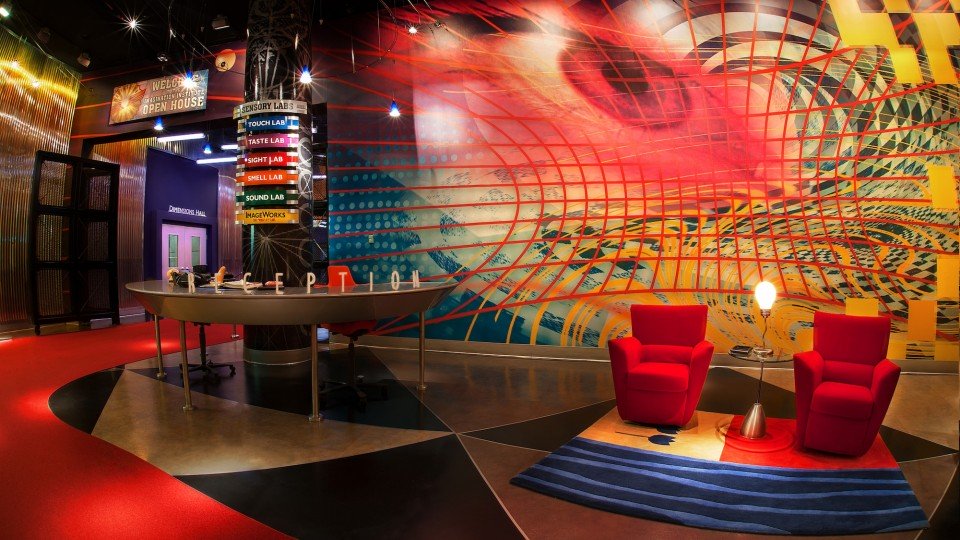
Given that the “Band-aid” version of the ride has now been showing for over two decades, fans felt certain a proper reimagining of the Imagination pavilion would be part of EPCOT’s ongoing, open-ended overhaul… Of course, Bob Iger declared that renovation complete with the opening of the Celebration Gardens (see next page) in December 2023 so… apparently not.
While fans still hold out hope that the Imagination pavilion will one day get a starring new E-Ticket that returns Dreamfinder, Figment, and “One Little Spark” to their starring roles at the heart of EPCOT, it’s seeming less and less likely. And with today’s Disney, any change that does come to the Imagination pavilion would almost certainly use the characters from Inside Out. After all, if somehow a reborn Imagination did use Dreamfinder, it would be the first major, IP-free addition to EPCOT in twenty years.
16. 20,000 Leagues (1971 – 1994) // New Fantasyland (2012 – Today)
When it came time to populate Walt Disney World with rides for Magic Kingdom’s opening, some Disneyland classics – like Haunted Mansion, Peter Pan’s Flight, and the Enchanted Tiki Room – were obvious. But duplicating Disneyland’s Submarine Voyage was trickier. After all, by the late ’60s, submarines were hardly the stuff of “Tomorrowland” anymore. Under the eye of Claude Coats (and a young protege, Tony Baxter), Submarine Voyage came east with a new, Fantasyland-infused wrap.
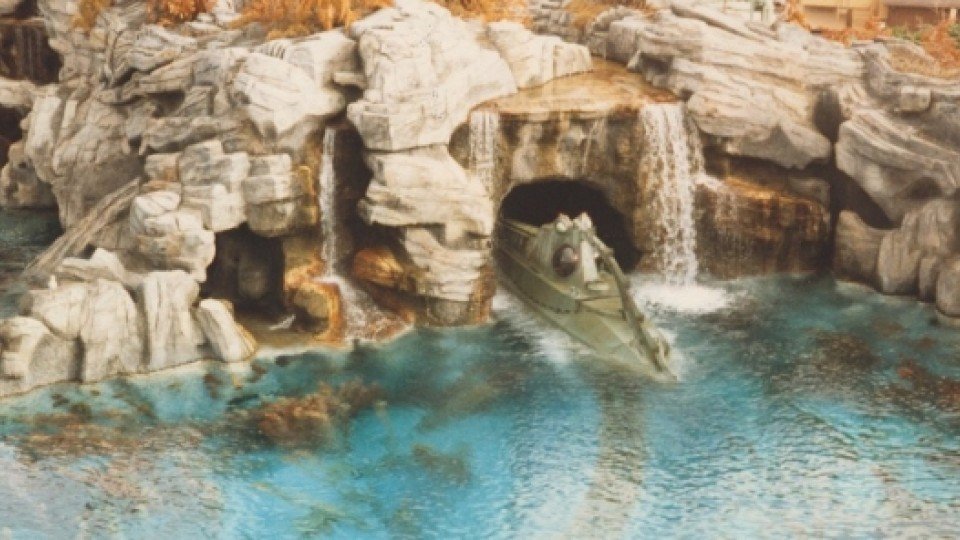
The Lost Legend: 20,000 Leagues Under the Sea: Submarine Voyage was an absolute E-Ticket. Based on Jules Verne’s 1870 adventure novel (and Disney’s 1954 film adaptation produced by Walt Disney himself), the ride maintained many of the scenes from Disneyland’s sub ride, merely grafting the ride vehicles with Victorian, steampunk ornamentation to match Harper Goff’s iconic movie sub, and a new finale featuring an attack by a terrifying Giant Squid.
A first major loss in the cost-cutting wake of Disneyland Paris’ opening, Magic Kingdom’s 20,000 Leagues closed for refurbishment in fall 1994… and never re-opened. The lagoon itself remained until 2004 when it was filled in, but only so a portion of the property could be used to house a small “Winnie the Pooh” playground. The loss of the massive ride left a giant expansion pad in Magic Kingdom’s Fantasyland… all it needed was an equally-ambitious project to fill it.
As our to-scale comparison of 20,000 Leagues and 2012’s New Fantasyland reveal, the absolutely gargantuan Submarine Voyage took up a whole lot of space. The entirety of the Seven Dwarfs Mine Train, Journey of the Little Mermaid, and Belle’s town are contained in the lagoon, showbuilding, and maintenance dock of that single ride. It certainly lends context to the Submarine Voyage’s astounding scale…
… and perhaps it also lends context to discussions around Disneyland’s version of the ride, which feels “critically endangered” and frankly, unlikely to survive the 2020s. Beloved as the subs may be, that’s a massive piece of real estate in a landlocked park…


